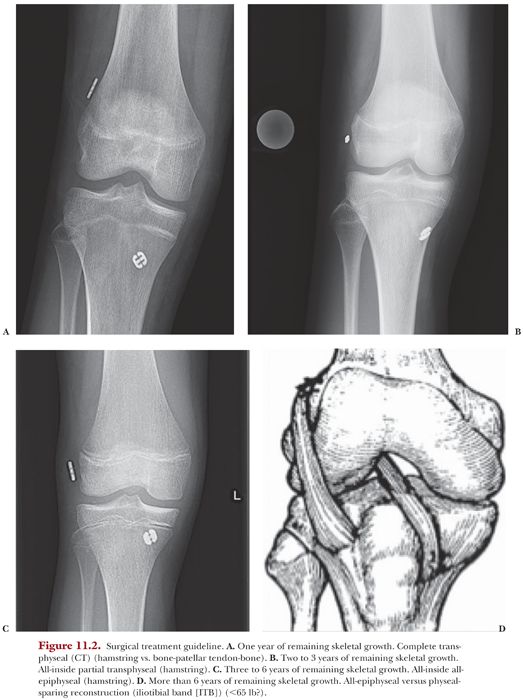• The natural history of nonoperative treatment in the ACL-injured skeletally immature athlete has been reviewed completely in Chapters 2 and 5. The indication for ACL reconstruction is predicated on clinical instability, associated intra-articular pathology, the patient’s activity level and goals, and skeletal age and growth remaining.
Step 3
• In patients who are prepubescent with more than 6 years of growth remaining, we prefer a physeal-sparing, all-epiphyseal, all-inside reconstruction in young athletes who weigh more than 70 lb or a physeal-sparing modified McIntosh reconstruction for those children weighing less than 70 lb. In the young athlete with 3 to 6 years of growth remaining, we perform an all-inside, all-epiphyseal ACL reconstruction using a hamstring autograft.
• In the young adolescent athlete with 1 to 3 years of remaining growth in whom the proximal tibial physis is approaching closure or beginning to close, we recommend an all-inside partial transphyseal reconstruction with an all-epiphyseal femoral socket and a transphyseal tibial socket.
• For adolescents who are near skeletal maturity (<1 year of remaining growth), we perform a complete transphyseal bone-patellar tendon-bone autograft or an all-inside, complete transphyseal hamstring autograft reconstruction depending on several graft selection factors, which include sport, position, body habitus, and gender (Fig. 11.2).




